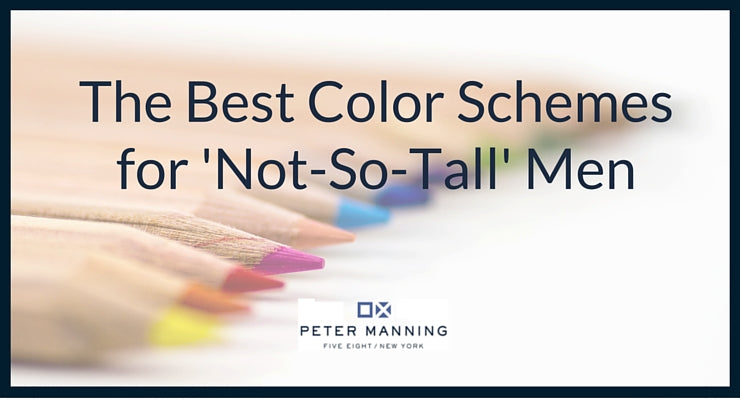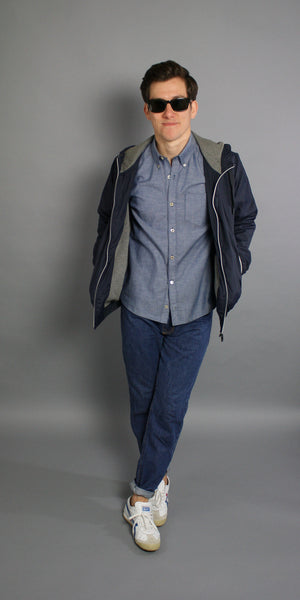Best Color Schemes for 'Not-so-Tall' Men

Choosing the right colors, patterns and combinations is one of the hardest parts of being a well dressed man.
Of course, for us shorter gents it's also hard to find clothes that fit, but at least we can count on Peter Manning to help us out in that department.
Colors, however, are complicated, subjective and downright confusing.

There are so many colors to choose from, and you have to combine different garments in way that looks good and flatters your body type.
Now I could talk for hours about skin tone, contrast levels, warm colors versus cool colors, etc.
In fact, I did a whole presentation about color, which you can watch for free right here:
But if you just want a quick crash course, don't worry, this post is for you.
I'm going to teach you how to maintain a streamlined look that maximizes your height and will never make you look shorter that you really are.
It's actually very easy. You just have to remember one thing...
Don't Cut Yourself In Half
Contrast is the difference between two colors. There's one type of contrast you want to avoid - the kind that cuts you in half visually.
For example, if you were to wear a white shirt with black pants, it would create stark contrast between your upper and lower halves - like I'm doing here:

But if you wore navy pants with a medium blue shirt, you'd have a clean, streamlined silhouette. People's eyes could move up and down your figure easily, without interruption.
To avoid "bad contrast" you just need to stick with the right color schemes.
2 Great Color Schemes for Short Men
If you're relatively new to dressing well, or you just want to keep things simple, there are two color schemes you should stick to:
- Monochromatic
- Analogous
A monochromatic color scheme consists of different shades of the same color. For example, here's a picture of me wearing a monochromatic blue outfit:

This outfit consists of different shades of blue - which is a great choice because it's so popular.
When going monochromatic, try to vary up the shades as well as the weights and textures of the pieces in your outfit.
You can also include neutral "colors" like grey for practicality.
An analogous color scheme consists of closely related colors (i.e., next door neighbors on the color wheel).
For example: blue and green, or green and yellow.
Here's a picture of me wearing analogous colors:

Notice the mild contrast between my upper and lower halves? That's because the color of my shirt (forest green) is closely related to the color of my pants (navy blue).
You Can Mix and Match
I don't want you to think that you have to choose one of these color schemes when you're getting dressed every morning.
You can mix and match, and you can always incorporate neutral hues like white, grey, tan, black and brown.

The key is to avoid the type of contrast that cuts you in half visually. If you can manage to do that, you'll never end up accidentally making yourself look short.
My Favorite Color Combos
In case you need some inspiration, here are three of my favorite color combinations involving blue (because I know you have some blue jeans at least one blue shirt in your closet):
- Blue + blue + grey
- Blue + green + grey
- Blue + yellow + green
If you're looking for a lighter color combo, you can't go wrong with white and tan, especially in the summertime.
Your Turn
I hope this post helped demystify color and make putting together a stylish outfit a little easier for you.
If you want to learn more about colors, check out this post:

